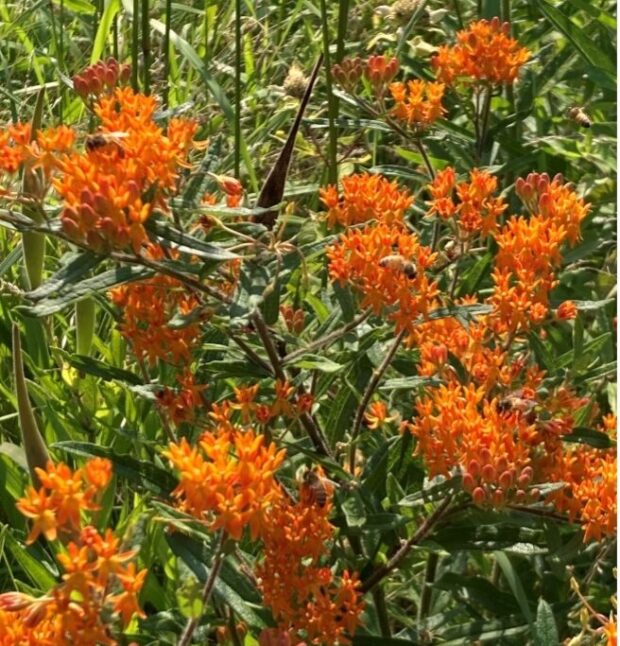Pollinators Prevail at Edgehill

Meadowscaping. Tapestry Lawns. Grassland. Whatever you call them, there is a growing appreciation for pollinator gardens and the important role they play in our ecosystem. With pollinator species like bees and butterflies on the decline, the avid gardeners at Edgehill, a continuing care retirement community (CCRC) in Stamford, CT, are doing their part.
Over the course of this summer, members of the Grounds Committee—a group of landscape-minded Edgehill residents—have been transforming a meadow on the campus into a pollinator garden.
“We have all this amazing property that is so beautiful,” says Grounds Committee Chairman Jean May. “A magazine dropped in my lap that talked about the pollinator pathway and I thought, ‘what a great idea!’”
Edgehill already boasted impressive resident and community garden spaces. A pollinator garden seemed like a perfect fit and the ideal project for May, a longtime volunteer at The Conservatory Garden in New York, and others. Laura Godown, a volunteer at Mill River Park in Stamford, had become well-acquainted with an invasive enemy: mugwort. This plant had taken over the Edgehill meadow and choked out anything else that tried to bloom. Two years ago, Edgehill’s meadow was treated with a specific herbicide to attack the mugwort and, “this year we were delighted to see varieties of grasses and wildflowers which had spread over the years but had been hidden by this mugwort.”
Bright orange asclepias—or butterfly weed—emerged as did the purply monarda—otherwise known as bee balm. The meadow has been buzzing with bees as the Grounds Committee, with the help of several local high school students, work to complete the transformation. They’ve cleared large areas by hand and laid out a garden of hundreds of plants that will create color and texture the whole season through. They ordered a special blend of meadow grass, “and we had them add to that seed for daises, back eyed Susan and aster, which will bloom next year,” says Godown.
The meadow changes in appearance over the course of the season. “It’s especially exciting to hear comments from people who see it and appreciate it,” says May. “It’s been a wonderful project for those of us who’ve been involved in it.”
The real buzz, however, comes from those who appreciate the garden the most. “The whole idea of creating the pollinator garden is to create a chemical free zone that native insects and bees can feed on and propagate,” notes Godown. “We were out watering and looked at the asclepias, and they were being swarmed by bees. That is really wonderful because you just don’t see them and there they were. I’ve started to see some monarchs. That is what the effort is about. To create habitat for our native species.”